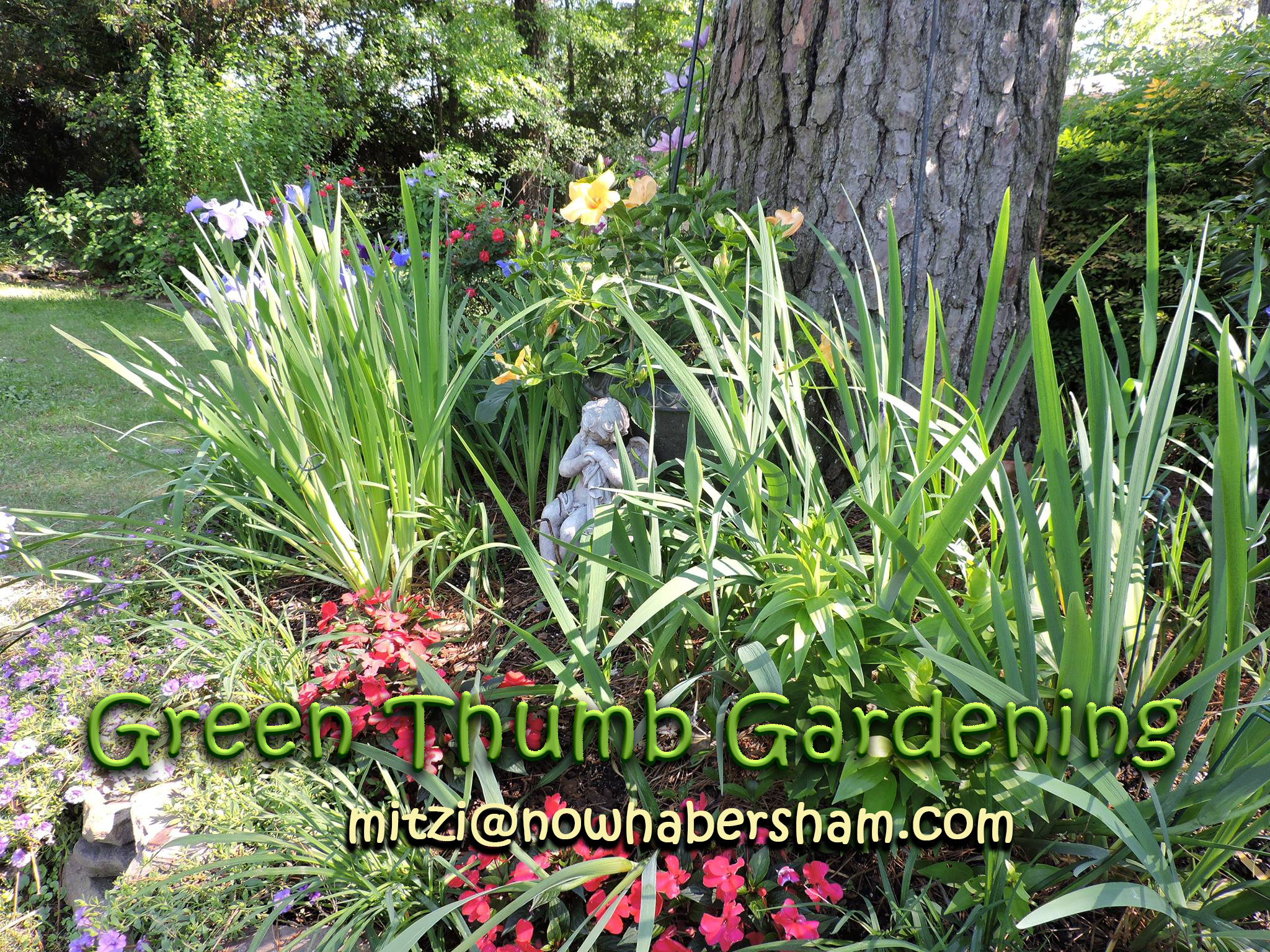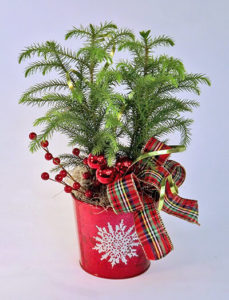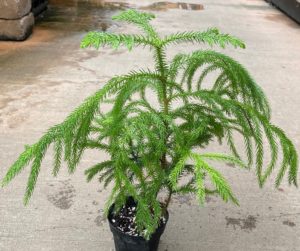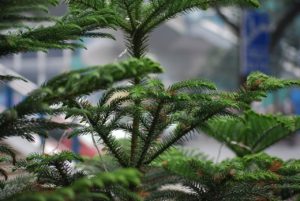
 Let me explain. I do have a pine tree in my house but it’s not one of those stately pines that grace the Georgia landscape. This one is a Norfolk Island pine. They are very popular during the holidays to add as a tabletop decoration with a few bows, lightweight ornaments, and you could add some fairy lights. It’s great for a dorm room or an office. Think of it as your very own little Charlie Brown tree. With the proper care, they’ll be around far past the holiday season and they will grow into a much larger plant than your tabletop will accommodate.
Let me explain. I do have a pine tree in my house but it’s not one of those stately pines that grace the Georgia landscape. This one is a Norfolk Island pine. They are very popular during the holidays to add as a tabletop decoration with a few bows, lightweight ornaments, and you could add some fairy lights. It’s great for a dorm room or an office. Think of it as your very own little Charlie Brown tree. With the proper care, they’ll be around far past the holiday season and they will grow into a much larger plant than your tabletop will accommodate.
Growing a Norfolk Island pine as a houseplant starts with realizing a few important things about Norfolk pines. While they may share the name and even resemble a pine tree, they are not true pines at all, nor are they as hardy as the standard pine tree that people are accustomed to. In terms of proper Norfolk pine tree care, they are more like most other houseplants than a pine tree. The first thing to keep in mind with the care of Norfolk pines is that they are NOT cold hardy. They are a tropical plant and cannot tolerate temperatures below 35 degrees.
With the exception of southern Florida and southern California, the Norfolk Island pine tree cannot be planted outside. It also needs to be kept away from cold drafts. The second thing to understand about indoor Norfolk pine care is that being a tropical plant, they need high humidity. Paying attention to humidity is very important in the winter when the indoor humidity is normally dry as a bone. Keeping the humidity high around the tree will help it thrive. This can be done by either using a pebble tray with water, using a humidifier in the room, or through a weekly misting of the tree. Another part of the care for a Norfolk Island pine plant is to make sure that the plant gets enough light. Norfolk pine trees prefer several hours of direct, bright light, such as the type of light that can be found in a south-facing window, but they will also tolerate full indirect, bright light as well.
My Norfolk pine is in my den and receives bright light and even some direct sun in the summer. If I’m not giving it enough water, it always lets me know when the lower branches begin to droop.
Water your Norfolk Island pine when the top of the soil feels dry to the touch. You can fertilize your Norfolk pine in the spring and summer with a water-soluble balanced fertilizer, but you do not need to fertilize in the fall or winter. It is normal for Norfolk pine trees to have some browning on the bottom branches. But, if the brown branches seem to be high on the plant or if they can be found all over the tree, this is a sign that the plant is either overwatered, underwatered, or is not getting enough humidity.
top of the soil feels dry to the touch. You can fertilize your Norfolk pine in the spring and summer with a water-soluble balanced fertilizer, but you do not need to fertilize in the fall or winter. It is normal for Norfolk pine trees to have some browning on the bottom branches. But, if the brown branches seem to be high on the plant or if they can be found all over the tree, this is a sign that the plant is either overwatered, underwatered, or is not getting enough humidity.
Norfolk pines are great indoor air filters! Like several other plants, they clean indoor air in two ways. They absorb pollutants into their foliage and the dangerous chemicals make their way to their roots where the houseplant transforms them into useable food for the plant. They also emit water vapors that create a pumping action that pulls dirty air to the roots where it is also converted into plant food.
 And for those with allergies (like me), there is more good news. These lacy, airy plants actually reduce molds and mildew in the air. NASA’s research shows that plant-filled rooms contain 50% to 60% fewer airborne molds and bacteria than rooms without plants.
And for those with allergies (like me), there is more good news. These lacy, airy plants actually reduce molds and mildew in the air. NASA’s research shows that plant-filled rooms contain 50% to 60% fewer airborne molds and bacteria than rooms without plants.
The Norfolk Island pine is not just for Christmas, it’s a great plant to have around year-round. It’ll love you even more if you give it a summer vacation in a shady spot on your patio!
